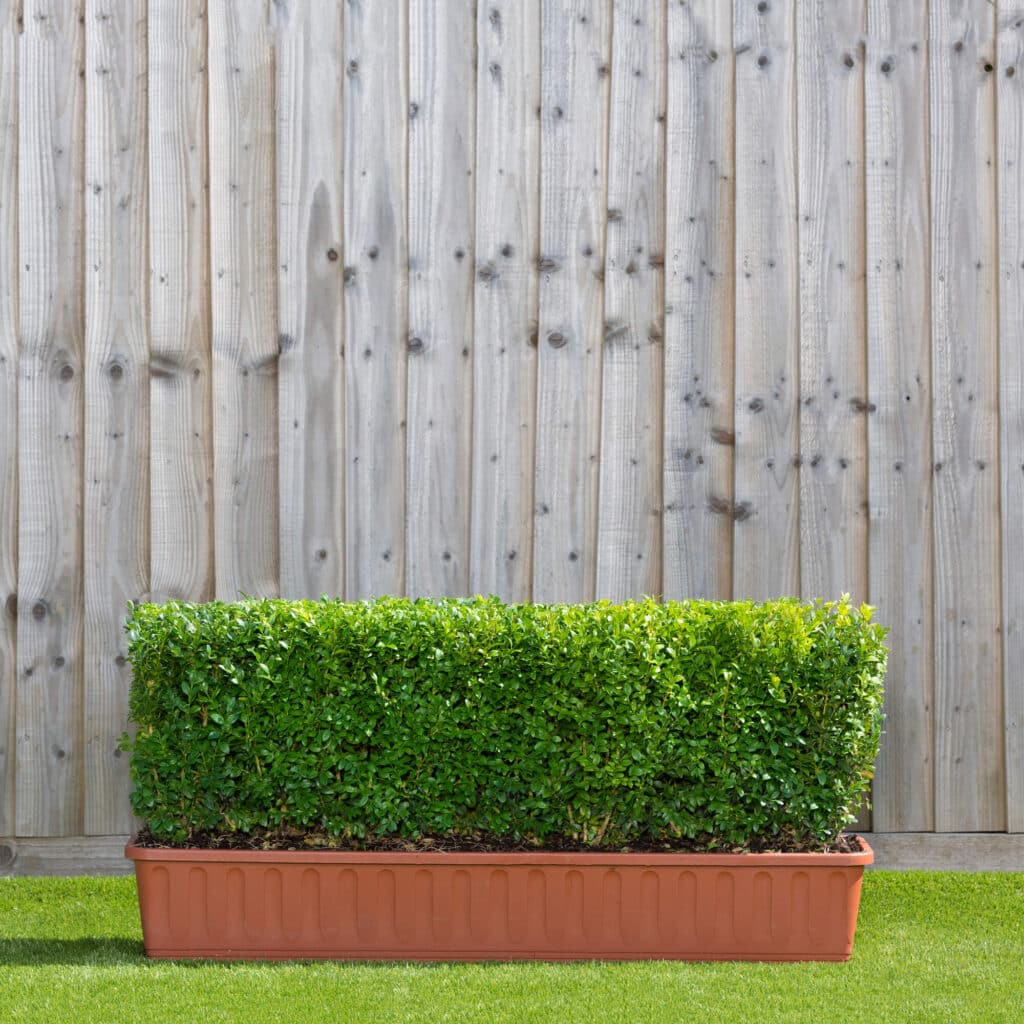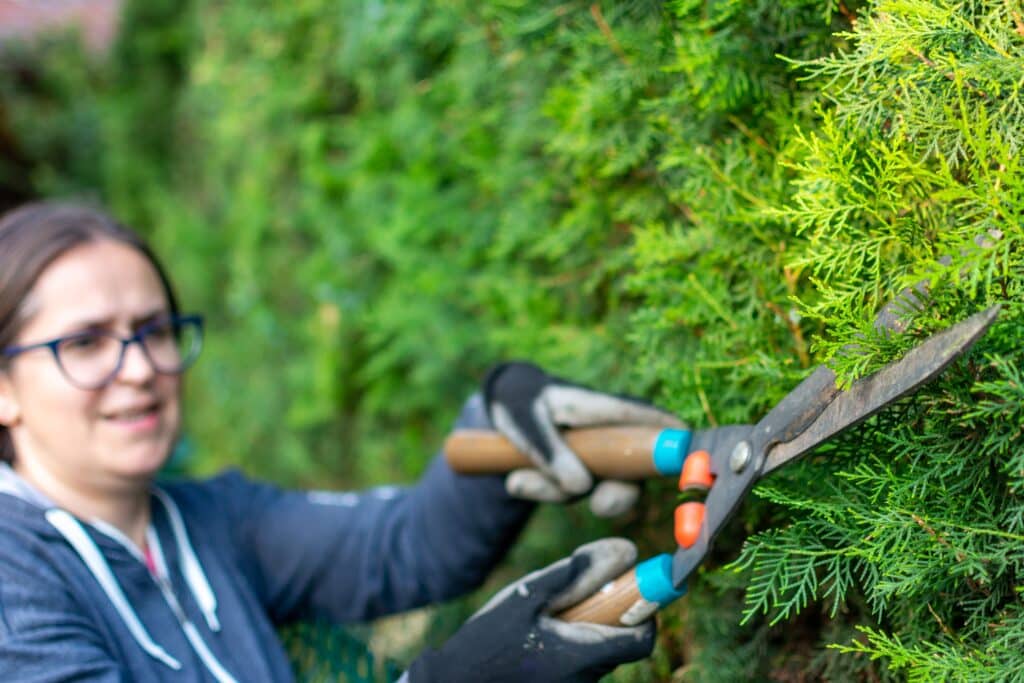Spring is the perfect time to trim hedges and give them the care they need to thrive. Here’s everything you need to know about spring hedge care.
As the weather warms up, your hedges will begin to grow and require more nutrients and water to support their growth. At Readyhedge, we put the health and growth of our hedges as paramount, as such we know a thing or two about spring hedge care!
From feeding and watering to trimming and pruning, please find our top tips for spring hedge care below.
Why Spring Hedge Care is Essential
Spring is the perfect time to care for your hedges, as they begin their growth cycle. By taking care of them now, you can ensure they will look their best throughout the year.
Hedges are also the perfect habitat for some wildlife, including hedgehogs, nesting birds, and invertebrates. With this in mind, it is advantageous to your garden’s bio diversity to keep the hedges in tip-top shape.
To support this growth, your hedges will need extra nutrients, such as nitrogen, phosphorus, and potassium.
By feeding your hedge as Spring blossoms, you can ensure that they have the nutrients they need to grow strong and healthy. Choose a balanced fertiliser and follow the instructions on the label for application rates.
1. Feeding Your Hedge
Feeding your hedge is an essential part of spring hedge care. As the soil warms up, your hedge will start to come back to life, and it will need plenty of nutrients to support its growth. Here’s what you need to know:
- Choose a balanced fertiliser with equal amounts of nitrogen, phosphorus, and potassium, and apply it evenly around the base of your hedge. This will provide your hedge with the nutrients they need to grow strong and healthy.
- Use a garden fork or cultivator to work the fertiliser into the soil, being careful not to damage the roots.
- Apply the fertiliser in early spring and again in late summer to provide your hedge with the nutrients they need throughout the growing season.
2. Watering Your Hedge
Watering your hedge is also an essential part of spring hedge care. As the weather warms up, your hedge will require more water to support its growth. Here’s what you need to know:
- Water deeply once a week to encourage deep root growth and nutrient absorption. Be sure to water your hedge early in the morning or late in the evening to avoid evaporation.
- Make sure the soil around your hedge is moist but not waterlogged. Overwatering can lead to root rot and other problems.
- Consider using a soaker hose or drip irrigation system to deliver water directly to the roots of your hedge. This can help to conserve water and ensure that your hedges get the moisture they need to thrive.
3. Best Time to Trim Hedges
Who doesn’t want their hedges to look good? Trimming your hedges and keeping their shape is an integral part of keeping your outdoor space pleasing to the eye.
The best time to cut hedges back is in early spring before new growth begins. This is only relevant for deciduous hedges, for evergreen hedges it’s best after it had its first flush of growth.
Trimming your hedges at this time will encourage bushier growth and promote healthy development throughout the growing season. Here are some tips for trimming your hedges:
- Use sharp, clean shears or hedge trimmers to make clean cuts and avoid damaging the plant.
- Start at the top and work your way down, trimming a little bit at a time. This will help you to maintain an even shape and avoid accidentally cutting too much.
- Step back from your hedge periodically to check your progress and ensure you’re happy with the shape.
4. Pest Prevention
By taking care of your hedge in the spring, you can help prevent pest problems later in the season. When your hedge is healthy and strong, it is less likely to be attacked by pests such as mites, aphids, and scale insects. By taking care of your hedge now, you can prevent these pests from taking hold and damaging your plants. Here are some helpful tips to prevent pests before they become a big problem:
- Regularly inspect your hedge. If you catch pests early, you can limit the damage. Check for any evidence of mites, aphids, or scale insects. To be extra thorough, get yourself a magnifying glass and comb over your leaves and stems. Keep a keen eye out for any discolouration.
- Keep your hedge healthy! The best way to prevent pests is by maintaining your hedge in the first place. Make sure your plants are getting the nutrients they need.
- Prune your hedges properly! Overgrown hedges provide an ideal habitat for pests, giving them plenty of coverage from outside dangers. So, keep them well trimmed but don’t cut back too far – this can stress the plants and in turn make them more susceptible to pests. More on pruning below…
5. Pruning Your Hedge
Pruning your hedge is another essential part of spring hedge care. Pruning helps to remove any dead, damaged, or diseased branches, which can promote healthy growth and prevent the spread of disease. Here’s what you need to know about pruning your hedge:
- Use clean, sharp pruning shears to make clean cuts and avoid damaging the plant.
- Remove any dead, damaged, or diseased branches to promote healthy growth.
- Shape your hedge by removing any overly long or straggly branches. Just be careful not to remove too much growth at once, as this can stress the plant and make it more susceptible to disease and pests.
Conclusion
In conclusion, spring is the best time to give your hedge the care they need to thrive. Feeding and watering your hedge, along with trimming and pruning, will promote healthy growth and ensure that your hedge looks its best all season long. Remember to trim your hedge in early spring before new growth begins and to remove any dead, damaged, or diseased branches.
If you have any questions about Spring hedge care and how to maintain your hedge in the best possible way, please don’t hesitate to contact us.




